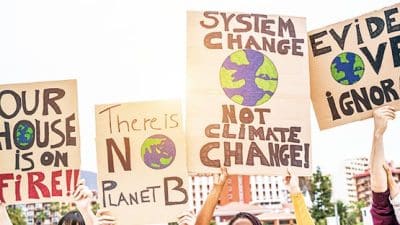Dear EarthTalk: What are the environmental risks associated with beach resorts?
– Shine Shoukkathali, via e-mail
While they may put up with a lot of stress from wind, waves and weather, beaches and the coastal environments surrounding them are surprisingly fragile. The ecosystems which make up coastal areas have evolved over eons to their current natural states as to their geologic features and the types and distribution of native plants and animals that live there. When large numbers of humans move in, whether as full-time residents or vacationers, the dynamics of local ecosystems begin to change. If the growth is not managed well, this inundation with people can contribute to a wide range of environmental problems.
For starters, development of any kind can scar ecosystems and seriously reduce or eliminate wildlife habitat. As houses, condos, shops, restaurants and other buildings begin to replace sand, grasses, trees and other natural features, the birds, fish and other wildlife that frequent such areas are forced to look elsewhere for suitable habitat if they can find any at all. An oft-repeated side effect of all this building is the removal of mangrove forests and sea grass meadows—important natural buffers against destructive waves from storms as well as important wildlife habitat. Other examples of coastal development gone awry include boardwalks or marinas built near or on top of coral reefs; beach-front houses, condos, hotels or golf courses replacing sand dunes and meadows; massive amounts of freshwater getting diverted from coastal rivers and streams for the benefit of tourists; and sea turtles scared off from nest sites.
According to the Climate Institute, the impact of the December 2004 Indian Ocean tsunami was much greater in more developed sections of coastal Thailand where mangrove and coral reef loss preceded the natural disaster. “In the absence of these natural protective barriers, the giant wave carried its energy all the way to shore, killing over 250,000 people and causing billions of dollars of damage,” reports the group. “In areas where natural buffer zones remained, such as the Phang Nga province, inland territories were protected by large mangrove forest that dulled the wave’s impact and dissipated its energy.”
“The indiscriminate conversion of natural shorelines and mangrove forest ecosystems for shrimp farming, urban settlements, tourism development and other often unregulated and unplanned human activities over the past several decades often make the coastal areas and its inhabitants much more vulnerable to the immense destructive force of the tsunamis,” reports the World Wildlife Fund (WWF).
Likewise, the hurricanes that have battered the U.S. in recent years have been far more destructive than those previous, and many blame unrestrained coastal development. “A significant chunk of the $200-billion-plus bill from the Katrina-Rita hurricanes might have been avoided if there’d been tough, realistic plans to deter development in exposed coastal areas through buffer zones, wetlands protection, tough building codes and relocating settlements to higher land,” reports the news service Common Dreams.
The key to minimizing property damage and the loss of lives from such natural disasters may well be in what we allow to be developed. By now, most North American coastal regions have learned their lesson the hard way about the perils of unrestrained development, and new building codes now tend to be much tougher. But with coast-battering storms getting more frequent and intense, all bets are off as to whether our newer rules will be enough to protect beaches and surrounding coastal areas in decades to come.
CONTACTS: Climate Institute, www.climate.org; WWF, www.panda.org.
EarthTalk® is written and edited by Roddy Scheer and Doug Moss and is a registered trademark of E – The Environmental Magazine (www.emagazine.com). Send questions to: [email protected]. Subscribe: www.emagazine.com/subscribe. Free Trial Issue: www.emagazine.com/trial.










